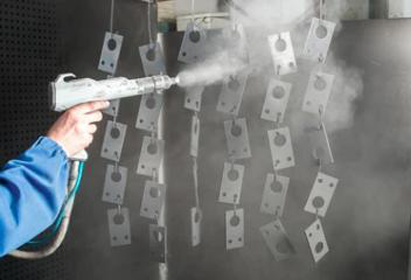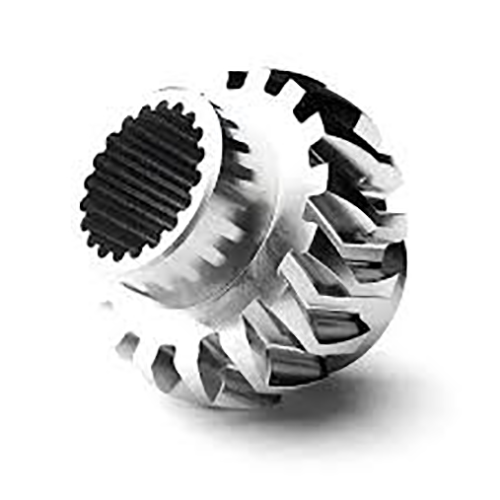
Meeting defined surface quality on a CNC-produced component is vital.
- Technical drawings lay out precise surface criteria for components
- Designers use Ra (mean deviation) as a numerical indicator of surface roughness
- Interpreting finish callouts is necessary to guarantee parts satisfy functional criteria
- Prescribed surface characteristics govern lubrication, abrasion, and longevity
- Correctly reading the finish notation is necessary to attain the intended result
CNC Machining — Precision Engineering Explained

CNC-driven fabrication functions as a modern manufacturing method employing digital instructions the machinery forms elaborate parts with exactness.
- Automated machining allows fabrication of accurate parts from multiple materials
- CNC adaptability suits industries including aerospace and automotive sectors
- Computerized machining yields consistent replication of parts in series production
Across development to broad production CNC machining contributes fundamentally to manufacturing innovation
Interpreting CNC Specifications
Parsing spec sheets may feel challenging at initial inspection
That said, foundational understanding plus a method lets you confront technical details
Begin by identifying the key parameters such as spindle speed feed rate accuracy work envelope and controller type
All these values combine to influence overall operational ability.
Example: increased spindle revolutions aid soft materials; accelerated feed raises production.
Knowing these correlations permits matching machine capabilities to your specs
Be sure to refer to vendor documentation completely.
Supplier manuals often give critical context and define technical language
What You Should Know About CNC Machines
Programmed machining equipment comprises computer-managed tools for exact automated fabrication of diverse materials They accept digital G-code to steer tools and control machining actions.
- Representative CNC types cover milling tools, turning machines, routers, plasma cutters
- Production processes accommodate metal alloys, plastics, woods, and composite materials
- Besides that CNC systems permit speedy prototyping and short production runs for businesses and research groups
Overview of CNC Machine Fundamentals
They exemplify the union of precise mechanics and modern control software Programmable machines execute software-driven fabrication of straightforward components and complex constructions The central concept is rendering digital designs as physical parts.
- Automated machine operation
- Software-guided fabrication
It performs sequenced precise axis operations dictated by program Engineers contribute by setting machining variables, overseeing runs, and assuring product standards.
Surface Finish Effects in CNC Production
Producing expected finish through machining is important It impacts both functional performance and surface look Stock properties, cutting settings, and finishing operations determine surface result.
A smooth surface finish can enhance the product's durability while a rougher finish may reduce its effectiveness CNC machining processes offer a wide range of tools and techniques to achieve the specific surface finish for different applications.
- Such as employing varied cutter geometries |carbide alloys|cutting speeds to achieve a desired surface finish
- Moreover post-machining steps like polishing or sanding improve surface quality
Understanding parameter influences helps attain the desired surface quality.
CNC Fundamentals: Operations and Uses
CNC machining is a precise method of manufacturing that employs computer-controlled machinery to shape parts from various materials They adhere to programmed code to reproduce complex geometries with repeatable accuracy Understanding machine control, programming, and tooling choices is crucial for effective machining
CNC serves diverse fields including aerospace, automotive, manufacturing, and electronics From aircraft parts to precision plastic molds, CNC creates complex high-quality items
Surface Finish Standards for CNC Machining
Exact finish callout is important for CNC component manufacturing It ensures that the final product meets the requirements for function and aesthetics Surface finish callouts are typically represented using the system known as the Surface Roughness Ra This numerical value expressed in micrometers inches or millimeters indicates the average height of surface irregularities.
Consider needed smoothness and the part’s application to determine finish requirements

Example: polished finishes often suit parts needing close tolerances and exact mating
Alternatively textured surfaces may aid applications needing traction or increased friction
Utilize a clear and concise callout in your engineering drawings to communicate the desired surface finish Enter the Ra specification and describe any post-process finishing or treatments.
Remember that effective surface finish callouts are key to achieving a successful manufacturing outcome
Kinds of CNC Machines and Their Strengths
The CNC ecosystem includes a broad selection of machines for multiple task categories They work with CAD/CAM programs to command cutters and deliver accurate component fabrication.
- Milling centers craft intricate contours cavities and surfaces by subtractive cutting
- Grinders refine surfaces and achieve tight dimensional tolerances via abrasion
- Laser, waterjet, and plasma technologies suit intricate shapes and delicate workpieces
Selecting equipment relies on part complexity material properties and tolerance needs Every machine class brings specific strengths that serve sectors like aerospace and automotive.
Achieving Premium Surface Results in CNC Processes
Obtaining fine surface quality is important and CNC technology delivers consistent control to attain it Through careful tuning of feeds speeds and tool profiles operators manage chip formation and surface generation Also advanced insert materials and suitable coolant practices support improved finishes Well-chosen cutting tactics plus careful setup empower manufacture of parts with exceptional surfaces.
Obtaining Surface Quality via CNC Code
Mastering surface finish during CNC programming is crucial for achieving desired quality outcomes Cutting parameter selection—feed, speed, tool geometry—controls surface finish Deliberate parameter selection and optimized lubrication enable near-flawless finishes.
- Additionally routine tool checks and upkeep maintain consistent finish quality Also ongoing tool care and inspection support sustained finish reliability Plus regular inspection and maintenance of tools cnc machine definition copyright finishing standards
- To enhance finish consider workpiece material, roughness targets and use case
- CAM previews let programmers modify strategies to avoid finish defects
- In addition periodic tool servicing and checks secure consistent surface quality
